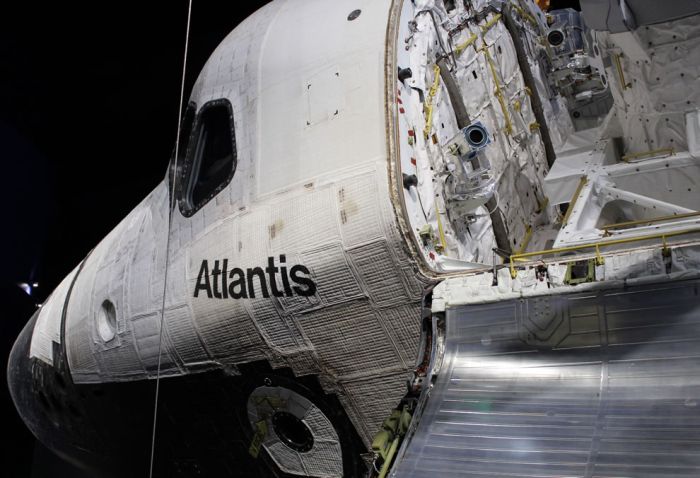|
|
Space Shuttle Atlantis
|
12 - 31 July 1992 - STS-46 - 39A - KSC - 7 days, 23 hours, 15 minutes, 3 seconds - 3,321,007 miles (5,344,643 km) - Deployed the Tethered Satellite System (TSS), a joint NASA/Italian Space Agency experiment. The satellite only reached a maximum of 860 feet (260 m) instead of 12.5 miles (20.1 km), because of a jammed tether line. The European Retrievable Carrier (EURECA) satellite was deployed for the European Space Agency (ESA).
13 - 3 November 1994 - STS-66 - 39B - Edwards AFB - 10 days, 22 hours, 34 minutes, 2 seconds - 4,554,791 miles (7,330,226 km) - Carried Atmospheric Laboratory for Applications and Sciences – 3 (ATLAS-03) to study the energy of the sun and how it affects the Earth's climate and environment. In addition, STS-66 included deployment and retrieval of the Cryogenic Infrared Spectrometer Telescope for Atmosphere (CRISTA) to explore the variability of the atmosphere and provide measurements.
14 - 29 June 1995 - STS-71 - 39A - KSC - 9 days, 19 hours, 22 minutes, 17 seconds - 4,100,000 miles (6,600,000 km) - First shuttle docking with space station Mir. 100th U.S manned space flight. Atlantis transported two cosmonauts Anatoly Solovyev and Nikolai Budarin to Mir and returned astronaut Norman Thagard and cosmonauts Vladimir Dezhurov and Gennady Strekalov. The joint U.S-Russian crew performed life sciences investigations aboard SPACELAB/Mir.
15 - 12 November 1995 - STS-74 - 39A - KSC - 8 days, 4 hours, 31 minutes, 42 seconds - 3,400,000 miles (5,500,000 km) - Carried docking module to Mir and docked to the Kristall module. During the three days of combined shuttle-Mir operations, Atlantis's crew transferred water, supplies, equipment and two new solar arrays to upgrade Mir.
|
|









